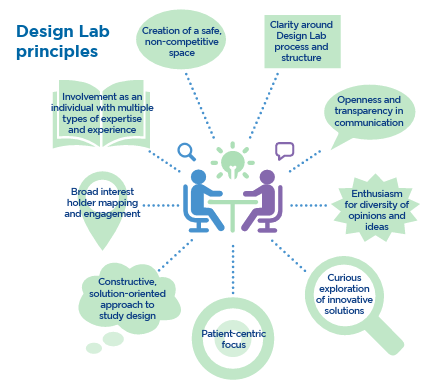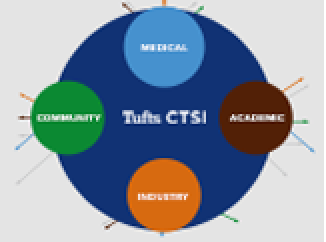2025
Translational Research on Wildland Fire Smoke Exposure: Health Risks and Protective Strategies for Firefighters
PI: Chiara Bellini, PhD, Associate Professor, Department of Bioengineering, Northeastern University College of Engineering
Co-PI: Jessica Oakes, PhD, Associate Professor, Department of Bioengineering, Northeastern University College of Engineering
Co-I: Paola Sebastiani, PhD, Faculty Biostatistician, Institute for Clinical Research and Health Policy Studies, Tufts Medical Center
Description: This study will investigate how short-term wildfire smoke exposure during prescribed burns affects wildland firefighters’ cardiopulmonary health by measuring biological and functional health indicators before and after their shifts. By identifying early signs of inflammation and oxidative stress, the project aims to inform new safety guidelines, improve occupational health standards, and guide public health policies for broader at-risk populations.
Finding the Uncoded Needle in the Haystack: An Observational Medical Outcomes Partnership (OMOP) Common Data Model Approach to Identifying Hidden Diseases in Electronic Medical Records
PI: Karen Errichetti, DrPH, MPH, Assistant Professor, Department of Public Health and Community Medicine, Tufts University School of Medicine
Co-PI: Elizabeth Rozanski, DVM, DACVIM (SAIM), DACVECC, Associate Professor, Department of Clinical Sciences, Tufts University School of Veterinary Medicine
Description: This project aims to improve rare disease detection by leveraging natural language processing and the OMOP Common Data Model to identify hard-to-diagnose conditions hidden within electronic medical records. Using canine idiopathic pulmonary fibrosis as a model, it will refine and validate a methodology that integrates structured and unstructured clinical data, helping to accelerate diagnosis, improve clinical trial recruitment, and provide a scalable solution for both human and veterinary medicine.
Biomimetic Extracellular Matrix (ECM) for Translational Modeling of Breast Tumor Organoids
PI: Gat Rauner, PhD, Research Assistant Professor, Department of Developmental, Molecular, and Chemical Biology, Tufts University School of Medicine
Description: This project aims to develop a more accurate breast cancer organoid model using a biomimetic extracellular matrix that mimics key human tissue components and tumor-microenvironment interactions. By comparing patient-derived tumor organoids grown in different matrices, it seeks to advance cancer research, drug testing, and personalized treatment strategies.
Predicting Communication Outcomes in Neurodegenerative Populations Using a Novel Acoustic-Based Framework
PI: Hannah Rowe, PhD, Assistant Professor, Department of Communication Sciences and Disorders, Northeastern University College of Health Sciences
Co-Is: Kathryn Connaghan, PhD, CCC-SLP, Assistant Professor, Department of Communication Sciences and Disorders, MGH Institute of Health Professions; Anoopum Gupta, MD, PhD, Neurologist, Department of Neurology, Massachusetts General Hospital
Description: The project will utilize a validated acoustic-based framework and a longitudinal dataset to address a critical gap in predicting speech deterioration in individuals with neurodegenerative diseases. By identifying both disease-specific and disease-agnostic factors that influence communication, it aims to develop a user-friendly clinical tool that offers diagnostic and prognostic insights, enabling patients and clinicians to take proactive steps in preserving communication abilities and improving quality of life.
2024
Using Natural Language Processing to Detect Bias in Emergency Department Clinical Notes
PI: Isha Agarwal, MD/ScD, Attending Physician and Faculty Scientist, Department of Emergency Medicine, Maine Medical Center
Co-Is: Elizabeth Scharnetzki, PhD, Faculty Scientist I, MaineHealth Institute for Research, Center for Interdisciplinary Population and Health Research; Tania Strout, PhD, Vice Chair for Research, Department of Emergency Medicine, Maine Medical Center; Annika Schoene, PhD, Research Scientist, Institute for Experiential AI, Northeastern University; Jessica DiBiase, MPH, Research Data Analyst II, MaineHealth Institute for Research, Center for Interdisciplinary Population Health Research
Description: This project leverages advanced natural language processing (NLP) tools to detect and quantify bias in Emergency Department (ED) clinical notes, a critical component of patient care. By refining measures of bias and developing an automated classification tool, the research seeks to identify subtle patterns of exclusionary language in real-world clinical documentation. The findings could inform interventions aimed at reducing provider bias, ultimately improving patient care and communication.
Validation of a Remote Speech/Motor Assessment Protocol for Neurodevelopmental Disorders
PI: Karen Chenausky, PhD, CCC-SLP, Assistant Professor, Department of Communications Sciences and Disorders and Director, Speech in Autism and Neurodevelopmental Disorders (SPAN) Laboratory, MGH Institute of Health Professions
Co-I: Simone Gill, PhD, PhD, OT, OTR, FAOTA, Associate Professor, Department of Occupational Therapy and Director, Motor Development Laboratory, School of Medicine, Boston University
Description: The project focuses on validating a remote data collection protocol designed to assess speech and motor skills in children with rare neurodevelopmental disorders, comparing the reliability of remote and in-person assessments. By encompassing a broad spectrum of verbal and motor abilities, this interdisciplinary research could lead to the development of a robust assessment tool that tracks changes in performance, supports biomarker discovery, and provides critical insights for clinical trials and parental advocacy for appropriate interventions.
Investigation of Non-contact Sensing Technologies and Methods for Vital Sign Monitoring in Neonates
PI: Brooke Krbec, DO, Attending Neonatologist, Division of Neonatal-Perinatal Medicine, Tufts Medical Center
Co-PI: Brian Anthony, PhD, Principal Research Professor, Institute for Medical Engineering and Science, Massachusetts Institute of Technology
Co-Is: Xiang Zhang, PhD, Research Scientist/Technical Lead, Center for Clinical and Translational Research, Massachusetts Institute of Technology; Evan Linton, MS, Clinical Research Scientist, Center for Clinical and Translational Research, Massachusetts Institute of Technology
Description: This project addresses the translational gap in neonatal care by validating and developing non-contact monitoring devices that cater to the unique physiology of neonates. Through a collaborative effort involving the MIT Center for Clinical and Translational Research (CCTR) and he Neonatal Intensive Care Unit (NICU) at Tufts Medical Center, novel radar and camera technologies will be compared with standard monitoring equipment in a clinical setting. A prototype combining these technologies will be designed and tested on infant simulators, potentially transforming neonatal monitoring practices and benefiting NICU personnel, patient families, and device innovators.
Optimization of Handheld 3D Ultrasound and Photoacoustic Imaging for Addressing Healthcare Disparities
PI: Srivalleesha Mallidi, PhD, Assistant Professor, Department of Biomedical Engineering, Tufts University School of Engineering
Description: The research aims to optimize a novel, cost-effective 3D ultrasound and photoacoustic imaging (USPAI) system that promises to make real-time 3D imaging more accessible across diverse patient populations. By focusing on improving the system’s performance for varying skin melanin and subcutaneous fat content, and ensuring consistent imaging results across different operators, the project seeks to address healthcare disparities. The outcome could significantly broaden the reach of 3D imaging technology, enhancing its applicability in various medical contexts.
2023
Collaborating with the Autism Community to Develop Novel Augmentative and Alternative Communication (AAC)/Speech Generating Device (SGD) Access Methods for Individuals with Little or No Functional Speech
PI: Leanne Chukoskie, PhD, Department of Physical Therapy, Movement and Rehabilitation Sciences, Bouvé College of Health Sciences, Northeastern University
Co-Is: Matthew Goodwin, PhD, Associate Professor, Department of Health Sciences, Bouvé College of Health Sciences and Khoury College of Computer and Information Science, Northeastern University ; Meryl Alper, PhD, Associate Professor, Department of Communication Studies, College of Arts, Media, and Design, Northeastern University; Kimberly Ho, PhD, Visiting Assistant Clinical Professor, Bouvé College of Health Sciences, Northeastern University
Description: The research seeks to develop and test innovative access technologies for augmentative and alternative communication (AAC) devices, specifically targeting non-speaking autistic individuals. By engaging with stakeholders and conducting a needs assessment within the nonspeaking autism community, the project aims to create more inclusive and symmetric communication tools. Prototype technologies will be evaluated, with the goal of advancing one for further development. This work has the potential to significantly enhance AAC technology, offering new means of engagement for those currently underserved by existing systems.
Next-Generation Nerve Repair: Combined Magnetic and Topographic Cues for Highly Directed Neurite Outgrowth
PI: Abigail Koppes, PhD, Associate Professor, Department of Chemical Engineering, College of Engineering, Northeastern University
Co-PIs: Ryan Koppes, PhD, Assistant Professor, Department of Chemical Engineering, College of Engineering, Northeastern University; Laura Lewis, PhD, Distinguished University and Cabot Professor, Department of Chemical Engineering, Department of Mechanical and Industrial Engineering, Northeastern University
Description: The project aims to advance therapies for peripheral nervous system (PNS) injuries by combining tissue engineering and materials science to explore magneto-stimulation for nerve repair. Building on previous findings that static magnetic fields can direct neuron outgrowth, the research will investigate the use of magnetic and topographical cues to enhance nerve regeneration. This interdisciplinary effort, involving bioengineers, materials scientists, and neurobiologists, seeks to optimize conditions for clinical applications, transforming outcomes for patients with PNS injuries and advancing the science of translation.
Empirical Dynamic Modeling: A Path to Predicting Health Outcomes with Limited Data
PI: Benjamin Stern, DPT, Assistant Professor, Department of Public Health and Community Medicine, School of Medicine, Tufts University
Co-Is: Ethan Deyle, PhD, Research Assistant Professor, Department of Biology, Boston University; Ying-Cheng Lai, PhD, Regents Professor, School of Electrical, Computer and Energy Engineering, Arizona State University
Description: This project aims to apply a dynamical systems approach, originally developed for studying ecosystem dynamics, to the analysis of athlete health. By utilizing empirical dynamic modeling (EDM), the research seeks to identify causal relationships in biological time series, overcoming limitations of traditional methods such as correlation or regression. Seasonal data from 30 Division I athletes at UCSD will be analyzed, with the potential to advance understanding of complex biological interactions and improve health monitoring practices. Successful outcomes will be shared through a repository, offering code, instructions, and examples for broader application.
Does Natural Language Processing Improve Identification of Hospitalized People Who Use Drugs?
PI: Alysse Wurcel, MD, Associate Professor and Attending Physician, Department of Geographic Medicine and Infectious Diseases, Tufts Medical Center
Description: This project focuses on refining and validating a system for identifying hospitalized people who use drugs, a critical step toward improving healthcare for marginalized populations. By leveraging Natural Language Processing (NLP) and gathering stakeholder feedback, the research aims to enhance the accuracy of a preliminary algorithm and apply it to hospital data. The outcomes could facilitate the efficient identification of research cohorts, aiding translational research across diverse healthcare challenges.



